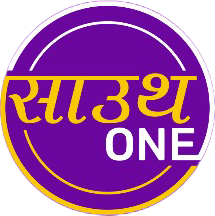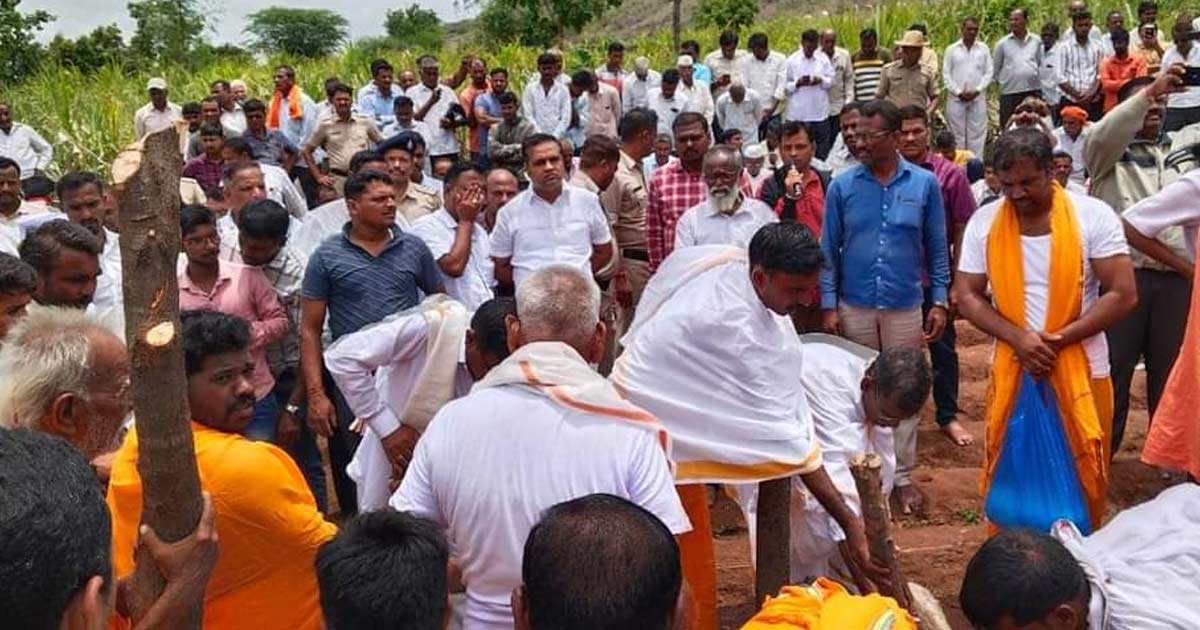Sukumara Kurup, since 1984, has been one of the most notorious fugitives in India. Hailing from Kerala, he is wanted because of charges of the cold-blooded murder of a film representative. In the wee hours of 22nd January 1984, a young man, Suresh Kumar, commuting over the Kolladavavu bridge in Kunnam spotted a burning car near a farm. Accompanied by another person, Radhakrishna, he went closer for inspection and found a body charred beyond recognition, in the driver’s seat. The two men rushed to the nearest police station in Mavelikara to report their shocking discovery. Around 5 a.m., the Deputy Superintendent of Police (DSP) Haridas reached the spot and immediately noticed the black burnt ambassador car bearing the registration number KLQ 7831.
After a preliminary investigation, it was speculated that the vehicle may have lost control due to overspeeding and crashed into the field, subsequently catching fire. Police identified the owner of the car, a 36-year-old Sukumara Kurup who was an NRI from Abu Dhabi and was believed to be deceased. However, DSP Haridas sensed foul play when a pair of slippers, glasses, gloves, a matchbox, an empty petrol can and footprints hastily leading away from the crime scene were discovered. As per protocol, the body was sent for an autopsy due to the raised suspicion.
The Police Surgeon, Dr. B Umadathan later disclosed in his autobiography ‘Dead Men Tell Tales’ that the body was unidentifiable and charred but the cause of death did not seem to be the car accident. Hence, he cut the body, examined his lungs and trachea, and noticed there was no sign of smoke and soot. Consequently, he found traces of brown liquid, which seemed like a toxic substance in his intestines. The fire burns on the victim’s body were not consistent with the patterns of the car’s fire burns; it seemed like some body parts were burnt deeply but others were not. He concluded it was a murder; the victim was poisoned before death, then succumbed to the fire burns. After the postmortem, the body was handed to Kurup’s relatives.
Who Killed Sukumara Kurup?

As per the evidence collected from the site of crime and the medical evidence, Kerala police confirmed it as a case of murder leading to unanswered questions about the guilty and their motive. The investigation began and Sukumara Kurup’s brother-in-law, Bhaskara Pillai, was brought in for questioning. He informed the police that he suspects Sukumara Kurup’s business rivals in Abu Dhabi were behind this gruesome murder. The police found it suspicious that Bhaskara Pillai was seen wearing full-sleeved shirts, even in hot and sunny weather. When he was asked to roll up his sleeves, burn marks were found on his hands and a bruise was spotted on his head upon closer inspection. Eventually, he admitted to having a brawl with Sukumara Kurup over fifty thousand rupees, which he said ended in murder. However, something didn’t add up and DSP Haridas was sceptical of Pillai’s narrative.
The police found that Sukumara Kurup’s personal aide cum driver Ponappan was missing with a second car. When he attended Sukumara Kurup’s funeral prayer, he confided in his uncle about how he and Sukumara Kurup had collided with a man while travelling. The accident took the man’s life and they placed his body in the car before setting it on fire. Another peculiar detail raised police’s suspicion when they noticed chicken curry was prepared at Sukumara Kurup’s home on the penultimate day when Sukumara Kurup died, propelling more doubts. Police also received information that someone looking like Sukumara Kurup was seen at a lodge in Aluva, but he had already left before the police could investigate. However, they found that the person’s handwriting in the lodge’s entry register matched that of Sukumara Kurup. The case had turned upside down.
Transformation of Sukumara Kurup
Sukumara Kurup was an Indian Air Force Airman. He was dissatisfied with his low-paying job and aspired to lead a luxurious life. He knew that IAF officers would not relieve him from his job, so he planned to fake his death. For this, he bribed a police officer to procure a death certificate to be produced in IAF. He was relieved from service and made his way to Abu Dhabi to change his fortune. But the chaos of identity crisis anguished him. Therefore, he embraced a new identity of Sukumara Kurup, leaving behind his original name PK Gopalakrishna Kurup.
Despite staunch opposition from his family, he married his childhood love Sarasamma before he left for Abu Dhabi. Sarasamma was the daughter of a domestic worker who had worked at his ancestral home. Eventually, due to his strong networking and communication skills, he found a job with a high salary package in a reputed Marine operations company in Abu Dhabi. His wife too moved to live with him and he found her a job as a nurse in a leading hospital chain. He was living his dream life and began constructing a big house in back Kerala. He also planned to start a business.
Due to a sudden turn of events caused by the global recession, his livelihood was impacted and he feared being unemployed. As the construction of his house and business plans were under threat, he realised he needed a huge sum of money to continue his luxurious life. A plan was concocted to fake his death once again to claim the insurance money. Happy with his plan, he flew to Dubai to meet his best friend Sahu for his assistance in executing the plan.
Behind the Criminal Conspiracy
One of Kurup’s relatives tipped law enforcement that he is alive and has not died. The investigation team was perplexed by different accounts. Eventually, DSP Haridas summoned Bhaskara Pillai for the second round of interrogation and this time he confessed that four people were behind the murder. His confession revealed that on 6th January 1984, when Sukumara Kurup came to Kerala for a holiday, he had shared his ambitious plans for a one-time life settlement inspired by a detective novel and a real-life German incident. He discussed this idea with his brother-in-law Bhaskara Pillai, driver Ponappan and close friend Sahu.
Interestingly, Sukumara Kurup had taken an insurance policy of about INR 60 lakhs in Abu Dhabi. He decided to fake his death as an accident to claim the hefty amount. He promised to divide the amount equally among the four of them and the deal was finalised. The first plan was to procure a dead body from the Alappuzha Medical College through some sources. But they couldn’t find a dead body matching Sukumara Kurup’s height and weight. Hence, the plan was abandoned.
The second plan was to dig up a body from a cemetery, but that too failed as the crematorium caretaker refused to cooperate. Finally, Sukumara Kurup devised a plan to murder a person who closely resembled him. The four agreed that this was a good plan if it could be executed well. On the night of 21st January 1984, they drove in two separate cars in search of their victim. Sukumara Kurup was driving his black ambassador car while the other three were in the other car.
They found a man asking for a lift near Hari Theatre in Karuvatta and offered him a ride as he met their requirements. His name was Chacko and was working as a film representative. They forced ether-mixed alcohol down Chacko’s throat after which he fell unconscious.
Next, Sahu and Bhaskara Pillai strangled Chacko to death using a towel. They transported the body to Kurup’s wife’s home, removing all his clothing and accessories including his watch and ring. First, they burned his head and face. Then they dressed him in Kurup’s clothes and placed him in the ambassador car. Four of them drove the dead body to a field in Kunnam and transferred the dead body to the driver’s seat. Bhaskara Pillai set the car on fire and himself suffered a few burns in the process.
Second Autopsy
A couple of days later, the Haripad police station received a missing person complaint filed by Chacko’s brother Thomas. As the investigation progressed, the authorities exhumed the body for a second advanced scientific autopsy. Chacko’s wife had already identified her husband’s charred body. The medical team decided to use the superimposition technique (to identify the skeletal remains using an X-ray of the skull) and discovered that the X-ray matched the skull of the deceased man.
Another helpful aspect was that the victim’s right foot was not completely burnt. The doctors joined the bones with the help of wires and reconstructed the foot. They worked on the anatomy of 13 dead bodies to know the exact amount of flesh required for the foot using specialised clay. The artificially constructed foot precisely fit in Chacko’s footwear, to an extent that even the indentations of the toes also matched. This was the first incident in India when a deceased man’s foot was used as scientific evidence. In 1990, the Alleppey sessions trial court found Bhaskaran Pillai and Ponnapan guilty, and Sahu turned as a prosecution witness.
Besides scientific evidence, Sukumara Kurup’s relative Madhu too confessed as a witness that he had procured ether under the pretext of anaesthesia at Sukumara Kurup’s request. Further, Chacko’s blood-stained clothes were found in Bhaskaran Pillai’s house. However, Sukumara Kurup is absconding to date. The Kerala Police Department dispatched special teams to various Indian states, Bhutan and the Gulf countries, but to no avail. Over the last three decades, the intelligence wing of the state police has frequently received inputs from sources suggesting he is alive and has lived in different parts of the country. However, they are unable to trace him and it cannot be confirmed whether he is still alive.







